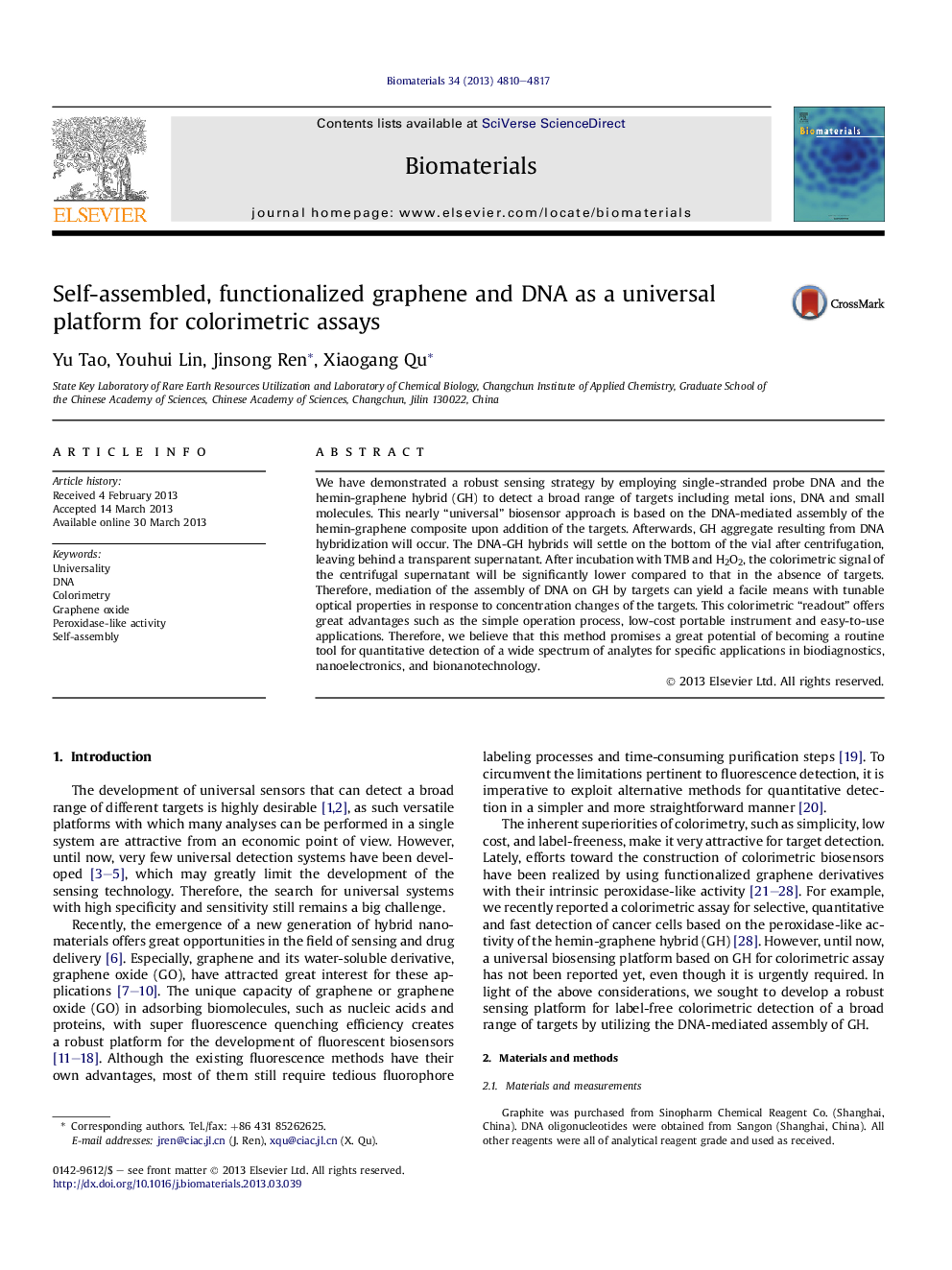| Article ID | Journal | Published Year | Pages | File Type |
|---|---|---|---|---|
| 6535 | Biomaterials | 2013 | 8 Pages |
We have demonstrated a robust sensing strategy by employing single-stranded probe DNA and the hemin-graphene hybrid (GH) to detect a broad range of targets including metal ions, DNA and small molecules. This nearly “universal” biosensor approach is based on the DNA-mediated assembly of the hemin-graphene composite upon addition of the targets. Afterwards, GH aggregate resulting from DNA hybridization will occur. The DNA-GH hybrids will settle on the bottom of the vial after centrifugation, leaving behind a transparent supernatant. After incubation with TMB and H2O2, the colorimetric signal of the centrifugal supernatant will be significantly lower compared to that in the absence of targets. Therefore, mediation of the assembly of DNA on GH by targets can yield a facile means with tunable optical properties in response to concentration changes of the targets. This colorimetric “readout” offers great advantages such as the simple operation process, low-cost portable instrument and easy-to-use applications. Therefore, we believe that this method promises a great potential of becoming a routine tool for quantitative detection of a wide spectrum of analytes for specific applications in biodiagnostics, nanoelectronics, and bionanotechnology.
